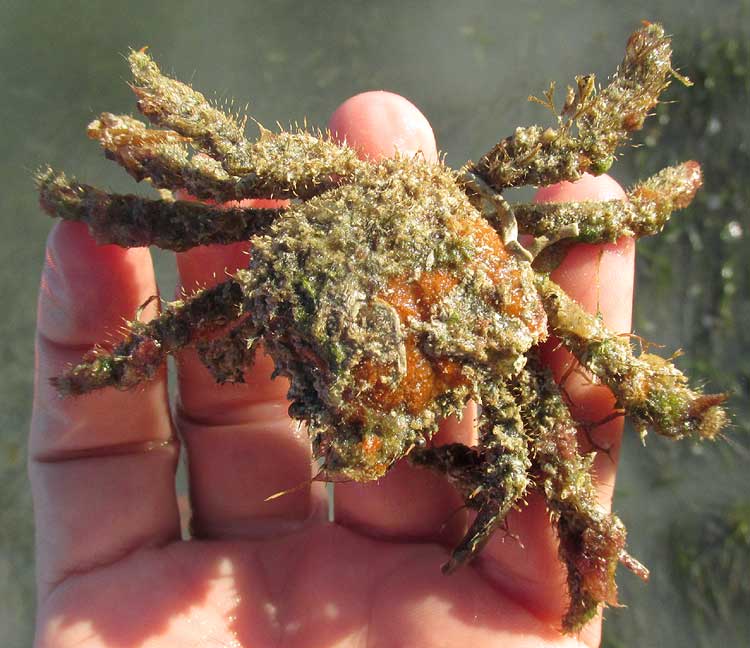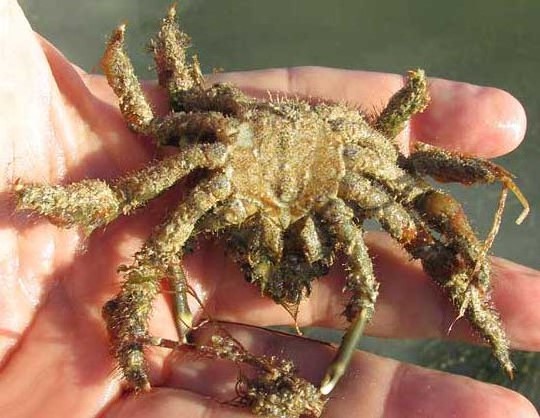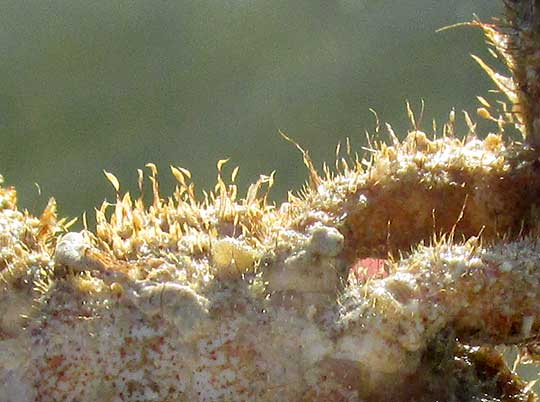Excerpts from Jim Conrad's
Naturalist Newsletter

from the April 5, 2015 Newsletter issued from Río Lagartos, on the Yucatan Peninsula's northern coast (~N21.60°, ~W88.16°), Yucatán state, MÉXICO
HAIRY CLINGING CRAB
During an especially low tide, Rayo and I were out exploring in and around an exposed, decaying metal pipe left over from when they excavated and dredged the canal across the estuary from Río Lagartos. The top of the pipe has been torn away, leaving the bottom like a long bathtub holding water when the tide goes out. In and around this old pipe you can find organisms not encountered in the surrounding vast, flat, seagrass-populated shallows. During this particular visit, Rayo plucked a critter from inside the pipe we hadn't seen before. It's shown above.
This crab is so heavily encrusted with algae and calcium carbonate that its yellowish-red color and general form are hard to make out. In that picture the pointy head is at the bottom. A view of the crab's bottom, better displaying the smallish, slender, banded claws at the picture's bottom, is shown below:

A close-up of what's encrusting the crab's surface, or exoskeleton, is shown below:

The white, crusty stuff seems to be calcium carbonate. The slender items looking like moss plants bearing spore-producing capsules appear to be the crab's own hairs, providing good anchorage for algae, whose presence camouflage the crab's body.
This is the Hairy Clinging Crab, AMPHITHRAX PILOSUS, occurring throughout the Caribbean. The SeaLifeBase.ca page for the species says that it "Dwells in reef and seagrass habitats in Belize. Forms facultative associations with sea anemones." Here our crab was right beside a large bed of Turtlegrass.